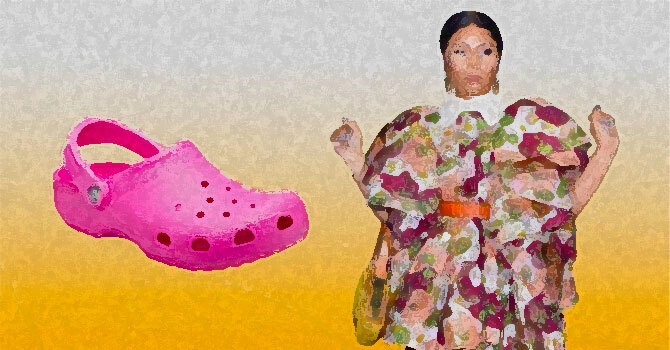How did a brand once known for ugly footwear change consumer attitude to become a household favorite? Let’s take a look.
Brands should know: it’s in trouble when the terms consumers associate with its products are terms like ugly and eyesore. That was the reality for Crocs and the reason why their trends were not so good for almost a decade. But something changed in 2017. People started buying Crocs. What was considered ugly shoes started appearing on fashion runways, celebrities were spotted wearing them, and every one wanted a pair of these “ugly” shoes.
How did Crocs pull off this magnificent brand transformation? And what changed consumer behavior so drastically? In order to understand the brilliance of their marketing strategy, we need to understand the underlying mechanisms of consumer psychology that impacted their brand transformation. We need to talk about consumer attitude and why it’s crucial to change attitude before trying to change behavior.

Changing Consumer Attitude
We know that every brand wants to influence consumer behavior. It’s a fundamental goal of business and marketing. Brands want to know, “How do we get consumers to stop buying our competitor’s product and buy our product instead? How do we take them from being a non-purchaser to becoming a first-time buyer? And how do we get them to spend more money over time?”
But not every brand knows a secret that research has confirmed. That is, in order to change consumer behavior, businesses first have to change consumer attitude. And if you don’t know what it means to change consumer attitude, then you won’t be successful at changing behavior.
Changing consumer attitude means understanding how much people like or dislike something—for example, a product, company, or brand. Their attitude is how they feel about something and changing their attitude is the first step of changing behavior.
Imagine trying to convince someone to do business with you, or invest in your idea, without any insight into how they perceive the category, industry, or product. If consumers have a negative attitude toward an SUV they’ve built because it consumes too much gas and pollutes the environment, doesn’t logic necessitate that they change the negative attitude about the SUV’s fuel efficiency before showing consumers promotional messages asking them to buy? Without changing their attitude first, how effective will they be at changing behavior?
Someone’s attitude about your business is the core driver of their behavior. It is the primary force behind choosing one product over another, buying now versus buying later, and spending more versus spending less. So, it’s surprising that this topic remains unconsidered and unspoken of among business owners, marketers, and sales teams despite its obvious importance.

Attitudes Based in Feelings, Knowledge, & Behavior
So, it’s only appropriate that so much consumer research is focused on the psychological factors that drive consumer attitude. And according to the classic tripartite theory, consumer attitude can be based on three things: feelings, knowledge, and past or present behavior.
If consumer attitude says that a Cadillac is grandma’s car, that attitude is rooted in feelings. If consumer attitude says that Cadillacs have terrible fuel efficiency, that attitude is rooted in knowledge. And if consumer attitude says, “Our family does not buy Cadillac”, that attitude is rooted in past behavior.
Why is it important to know whether your consumer’s attitude is rooted in feelings, knowledge, or past or present behavior? Because persuasive messages are more effective at bringing about attitude change when they match the attitude base.
In simple language, a negative attitude rooted in feelings can’t be influenced or changed unless the persuasive message is also feeling-based. You shouldn’t try to argue against feelings using knowledge-based messaging. The attitude base and the content of the persuasive message must match.

Confidently Comfortable
As we see with Crocs, they did two things brilliantly to bring forth their brand transformation. They focused on changing attitude before trying to change behavior and they matched the tone of their persuasive message to the attitude base of their consumer.
They embraced the polarization, or “ugliness”, of their product and persuaded their customers to shift their attitude from thinking Crocs were ugly to thinking they were one-of-a-kind. They matched an affect-based attitude with an affect-based message.
Crocs rewrote their brand vision: “We at Crocs believe that everyone should be comfortable in their own shoes.” Thus, inviting people to go from being self-conscious about their appearance to being conscious about their comfort.
They called on their customers to value feeling comfortable in their shoes and prioritize that over everything else. And they called on people to be unashamed of wanting to be confidently comfortable. And they shifted consumer attitude to go from thinking it’s ugly design to believing it’s people-first, comfort-first design!
They knew what all great brands know. That is, before you can change behavior, you must change attitude. Before Crocs could find their way onto people’s feet, they had to find a way into people’s heart. And there’s no end in sight to the love affair between Crocs and its consumers.

0 Comments